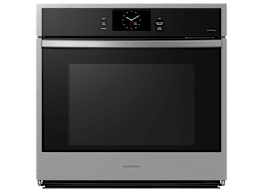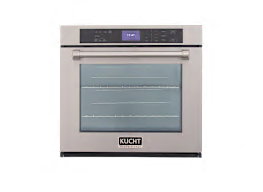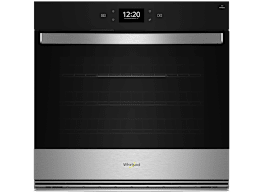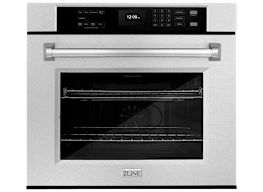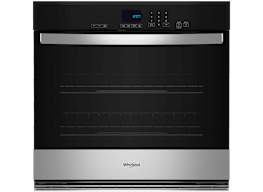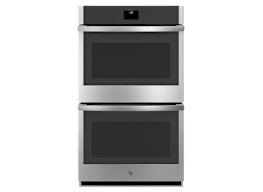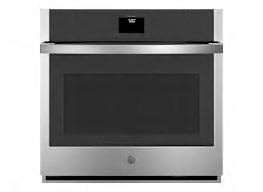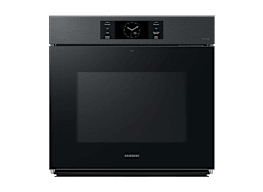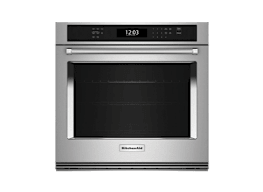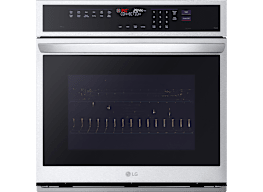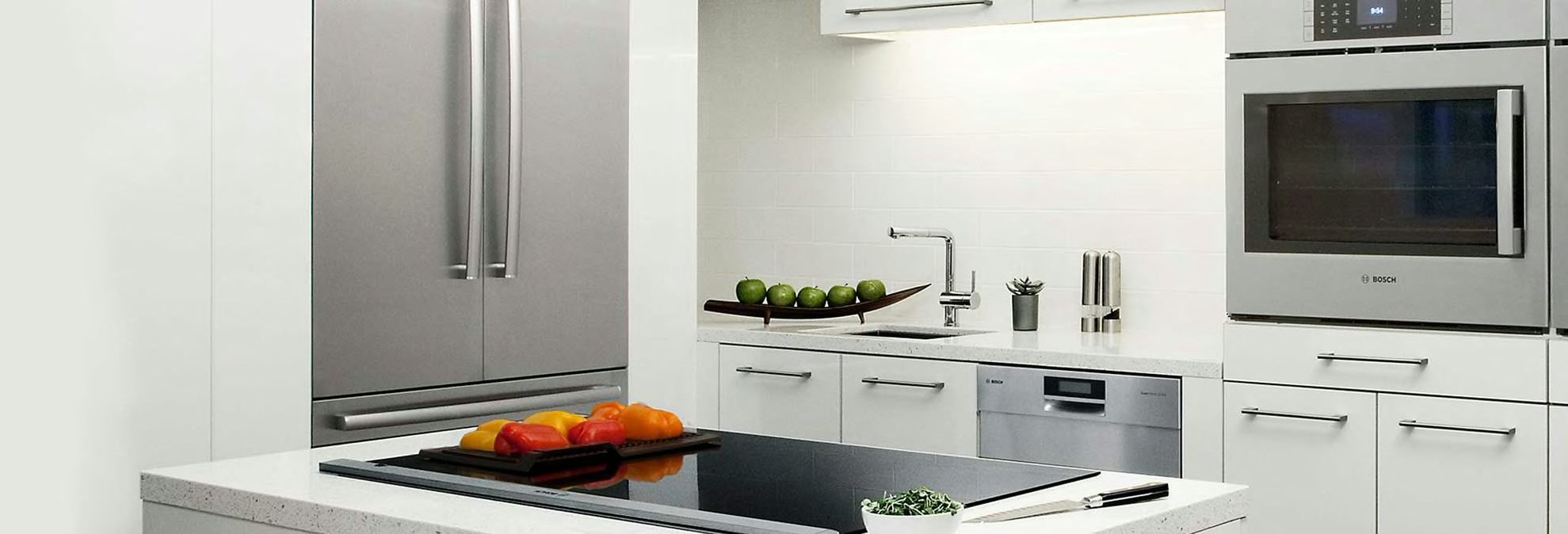
Wall Oven Buying Guide
Wall ovens offer flexibility that you won’t find in a range. They can be installed on just about any wall in your kitchen, and at any height, so you don’t have to bend over to place a roast into the cavity. What’s more, you can shop for the best cooktop and oven performance without needing to find a range that excels at everything.
In our labs, we test electric wall ovens, which make up the majority of wall ovens. You won’t need gas or propane service at your house to install one—an electrician can run an electric line to anywhere in your kitchen, typically for a few hundred dollars. Our tests with ovens inside ranges also tells us that electric ovens often outperform their gas counterparts, particularly when it comes to high-heat broiling.
We’ve also tested some combo wall ovens, or wall oven-microwave combos, which blend the capabilities of ovens and microwaves. Read on for more about different types of wall ovens. We also cover the most important things to consider before buying a wall oven.
If you’re redoing your kitchen, or replacing the major cooking appliances, you’ll want to make sure you can buy a new wall oven and a cooktop at the same time. Look to local independent dealers, consider scratch-and-dent models or floor samples, or be ready to be flexible about which models you select—some can ship in days, and some may take months.
For the latest test results, see our complete wall oven ratings. You can also check out our roundup of the best electric wall ovens, as well as our picks of the best combo wall ovens.
How CR Tests Wall Ovens
We test electric wall ovens in single- and double-oven configurations using a combination of foods and taking precise temperature measurements. To start, we wire each oven cavity with thermocouples—wire thermometers capable of withstanding high temperatures—to see how evenly the oven heats from one spot to another.
Next, we bake multiple trays of sugar cookies and cakes on different racks, looking to see which models produce evenly browned baked goods and which leave these items raw or burned. In a typical year, we bake more than 2,000 cookies and more than 400 cakes in the course of oven testing. Then we put a pan of burger patties under each broiler to see how evenly the broiler heats and whether it gets hot enough to sear.
We assess features and rack positions, and measure the usable area inside each oven. Last, to test the self-clean cycle, we paint the inside of each oven with a messy mixture that includes egg, tapioca, cheese, and pie filling, and we bake it into place before running the cycle, seeing which ovens come clean and which leave you stuck scrubbing.
For combo wall ovens—single appliances that come with a microwave and a wall oven—we also test their microwaving capabilities. For example, we time how fast a microwave heats 1 liter of room-temperature water. We then heat a bowl of cold mashed potatoes for 10 minutes, then take temperature readings in 20 spots to see how evenly the microwave heated. For defrosting evenness, we test how well the combo wall oven’s automatic-defrost program defrosts one pound of frozen ground chuck.
How to Pick a Wall Oven
Here are four factors to consider before and as you shop.
Width
Wall ovens are 24, 27, 30, or 36 inches wide. The most common are 30 inches wide—the ones in our ratings are all that width. If you’re replacing a wall oven, make sure to measure the wall oven and the cabinet cutout before you shop for a new one.
Fuel
Electric wall ovens are overwhelmingly the most popular type. In our tests of ovens in ranges, we find that electrics tend to perform better, particularly at broiling.
Capacity
Many manufacturers make misleading claims about oven capacity—typically, they include every square inch of space, even if we never use some spaces for cooking, like the area below the bottom rack. We look for usable capacity, and we find big differences among models. For single-oven wall ovens, the smallest models in our test offer about 2 cubic feet of usable space, and the largest models (those that we’d rate as excellent for capacity) have more than 3 cubic feet of usable space. It might not matter much for a tray of cookies, but you’ll be glad you have the clearance when you’re finessing a giant turkey into the oven next Thanksgiving.
Configuration
Wall ovens come in single- and double-oven configurations, and we test both. A double oven lets you cook more and allows you to cook foods at two different temperatures, which is particularly helpful around busy cooking holidays. Read on for more about the difference between the two types, and how best to install them.
Wall Oven Types
Electric wall ovens come in single- and double-oven configurations, and we test both. We also include combo wall ovens—models that combine wall oven and microwave functionalities into one appliance—in our ratings.
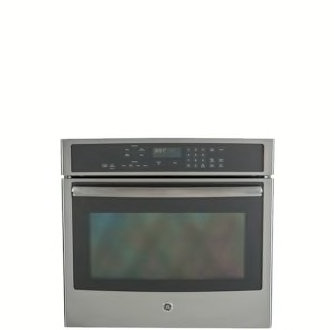
Single Wall Oven
Single wall ovens are usually smaller than the ovens you’d find on a range—the single wall ovens we test have usable capacities from 2 to 3 cubic feet, while those in ranges are usually between 3 and 4 cubic feet.
When installing a single wall oven, make sure that the controls are easy to see and reach, and that the door is at a height that prevents unnecessary bending.
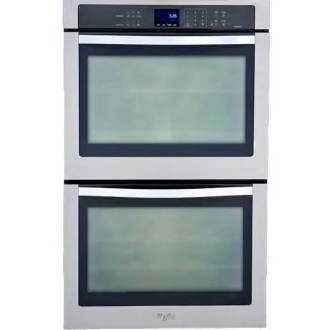
Double Wall Oven
Double wall ovens offer more capacity than a single wall oven. The two oven cavities share a single control panel, and they allow you to bake, roast, or broil at two different temperatures at the same time. A double wall oven is also a lot bigger than the double oven you might find built into a range (which is really just a single oven divided into two cavities).
Some manufacturers also offer a single wall oven with a steam oven or a microwave built in above the oven. Consumer Reports does not currently test those models.
As with a single-oven model, a double wall oven should be installed at a height that allows for easy access—the upper oven should be reachable, and the lower oven shouldn’t require any more bending than needed.
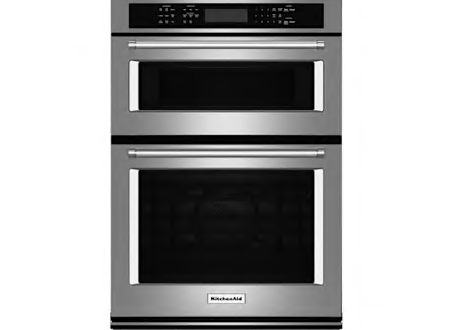
Combo Wall Ovens
Wall oven-microwave combos merge both types of ovens into a sleek, single package, freeing up countertop space. They’re a reasonable choice if you want that streamlined design and happen to have a flexible budget. Most of the models we’ve tested cost over $2,500, significantly more than what you might pay for an entry-level single wall oven and a freestanding microwave.
Like the installation of a double wall oven, you’ll want to make sure the appliance isn’t too low so that you won’t have to bend much for the lower part (usually the oven). Both parts of the appliance should be easily reachable.
Wall Oven Features
Generally, the more bells and whistles on a wall oven, the higher the price. Some features increase safety and convenience, while others allow you to do more than just bake, roast, and broil food.
- 1
- / 6
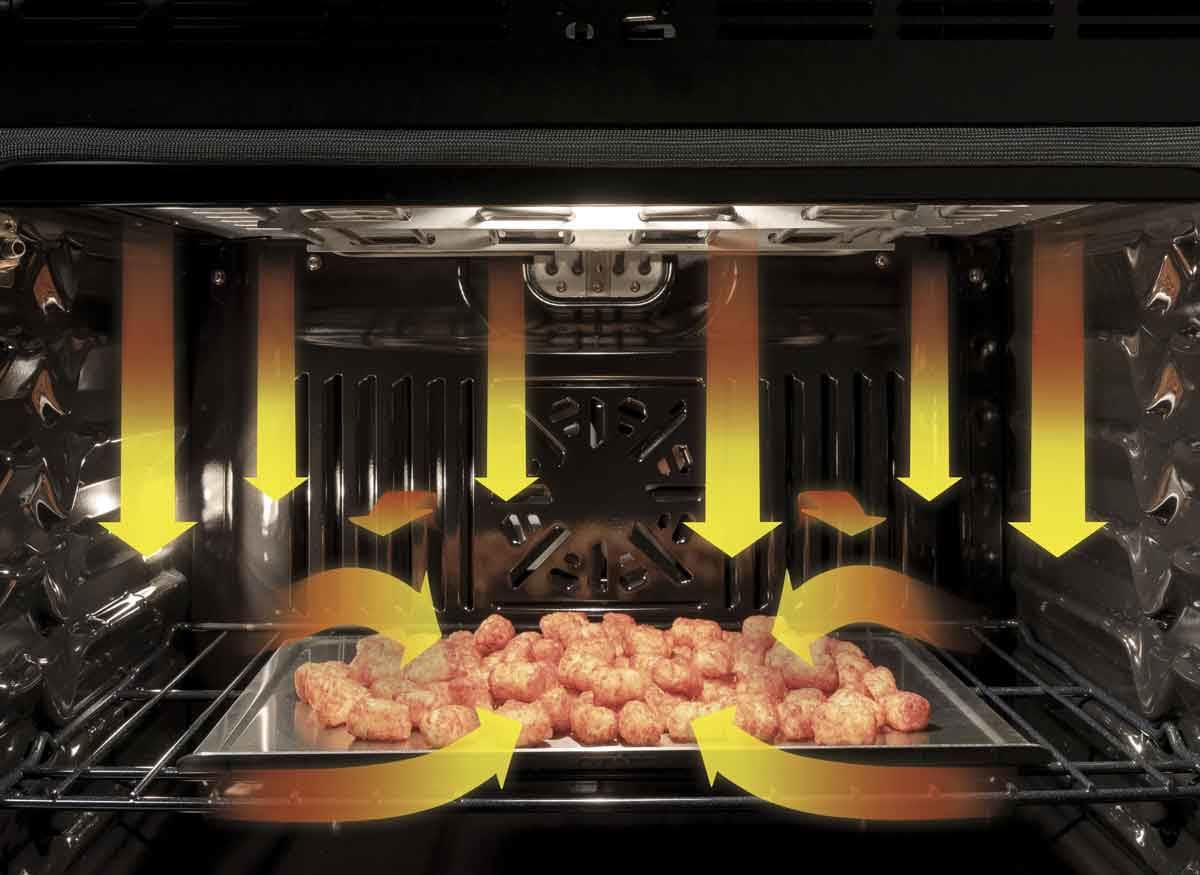
Air-Frying Capability
This oven function lets you cook crispy foods like french fries without buying a countertop air fryer. Some ovens include a perforated tray for air-frying, which allows hot air to circulate while you cook. Some manufacturers sell this tray separately.
PHOTO: GE
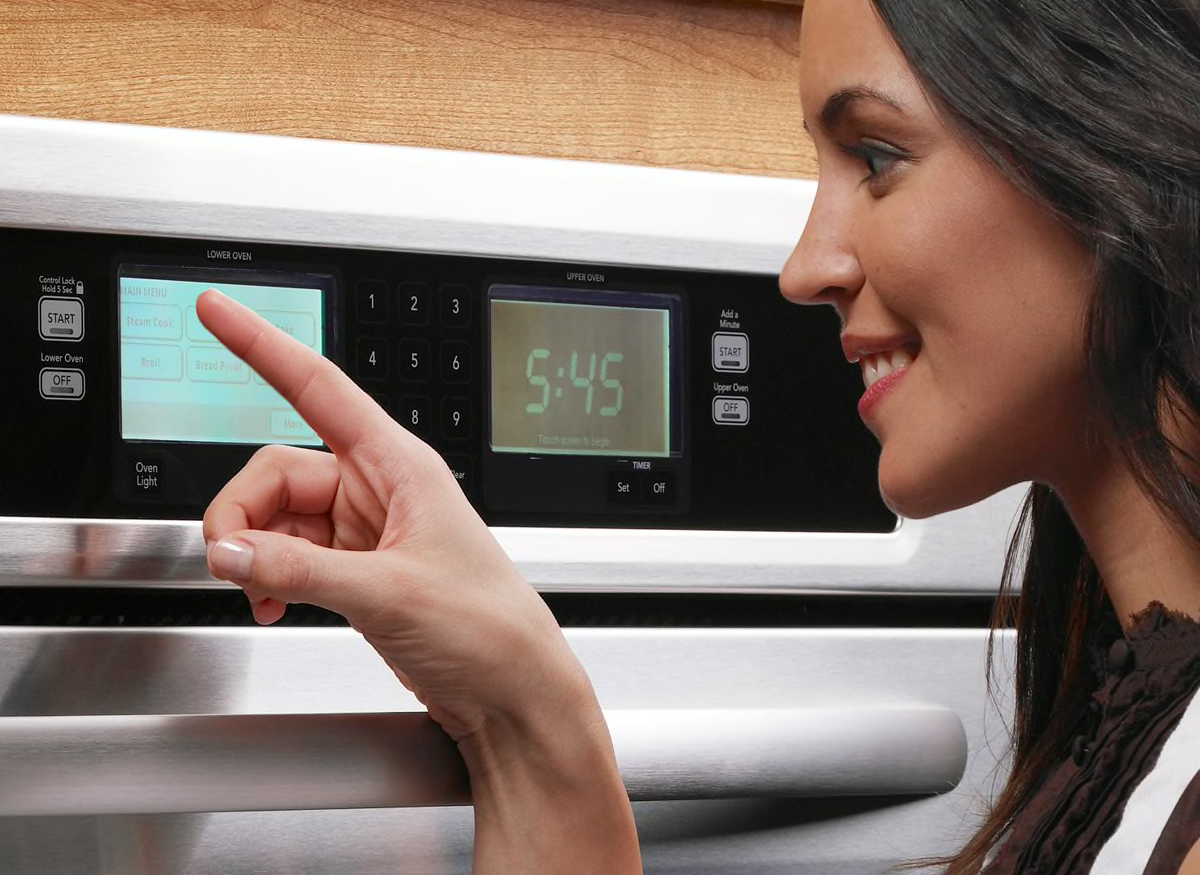
Control Lockout
This lets you disable the oven controls and is recommended for households with children.
PHOTO: KITCHENAID
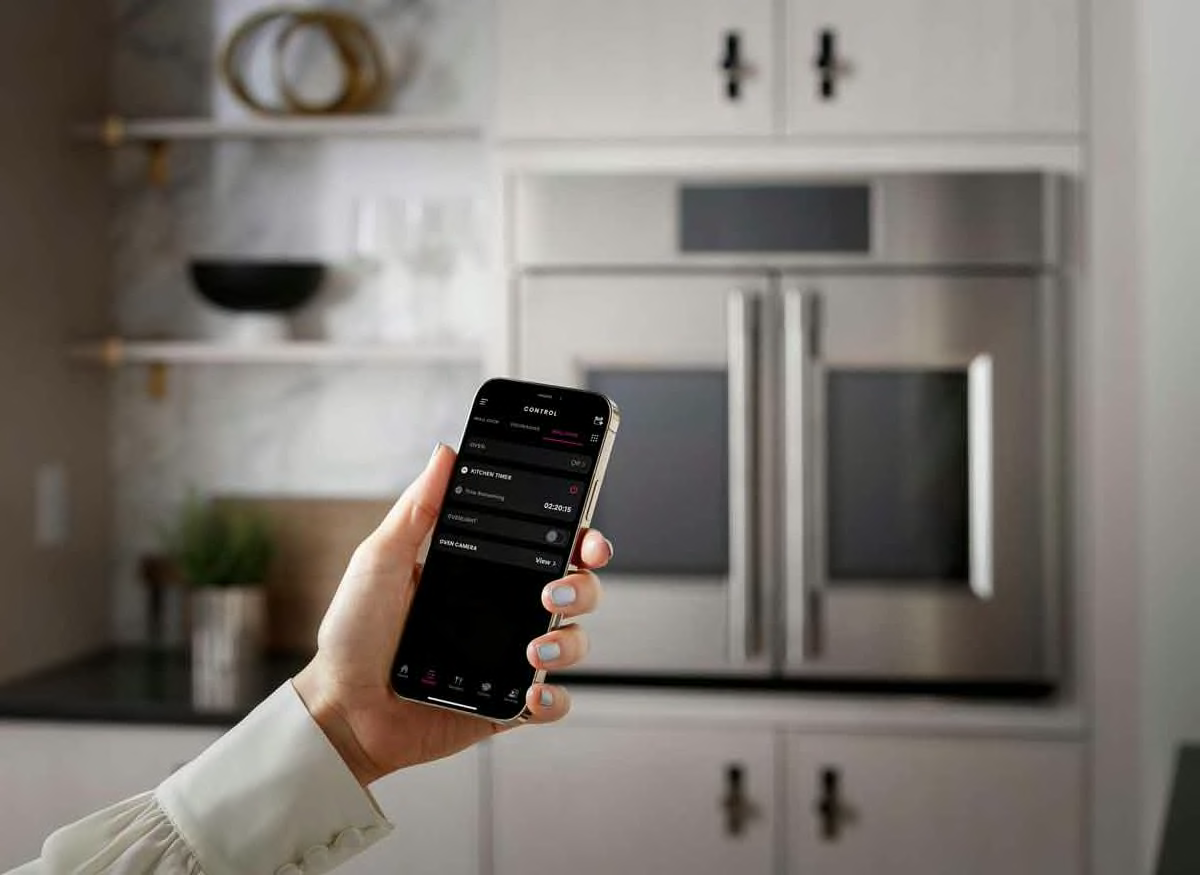
WiFi Connectivity
Most WiFi-connected ovens work with a smartphone app, which lets you check the oven temperature, set a timer, or—if your oven comes with a temperature probe—check the internal temperature of whatever you’re cooking. You can also use the app to make sure your oven is turned off after you’ve left the house.
PHOTO: WHIRLPOOL
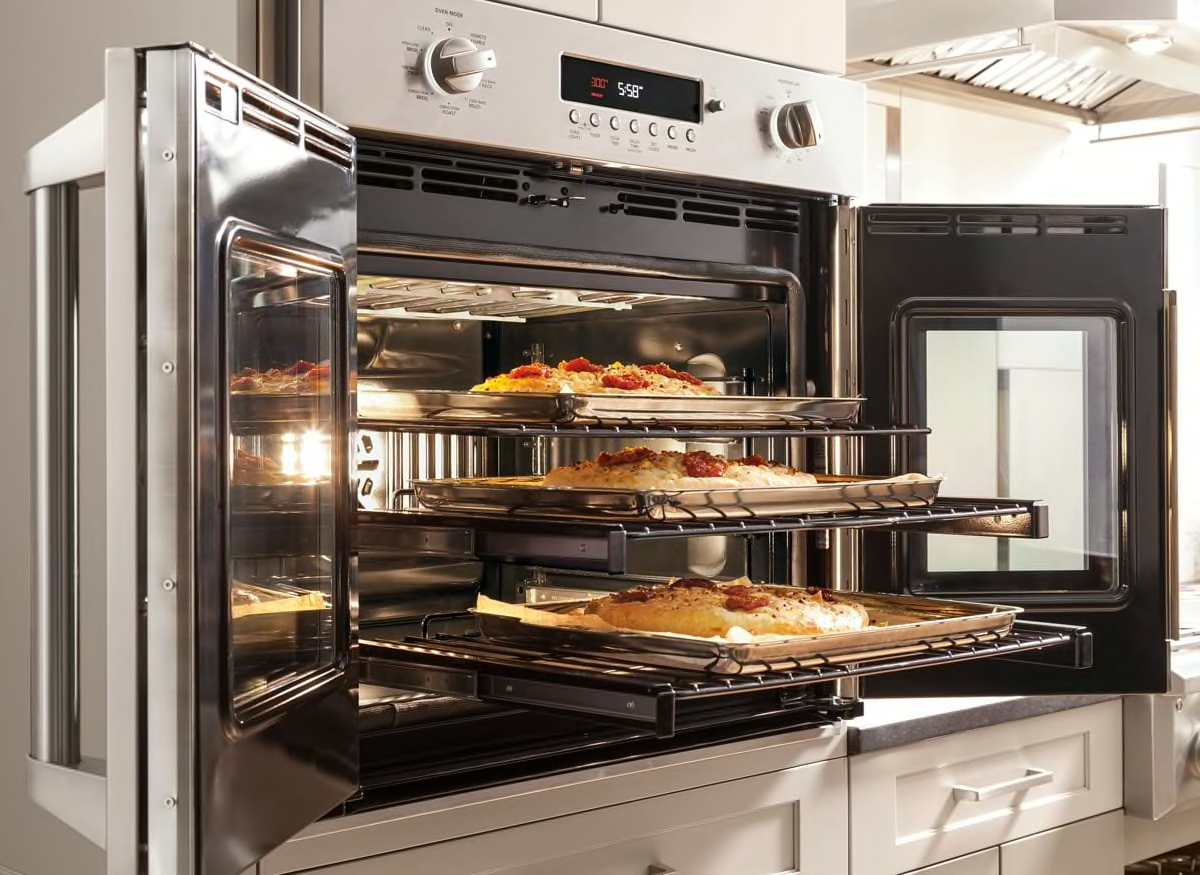
Side-Swing and French Doors
Some ovens have a single door with hinges on one side. French-door models (shown) have two doors that separate in the middle and open outward. Both types prevent you from having to reach over an open door to retrieve that 30-pound turkey.
PHOTO: GE
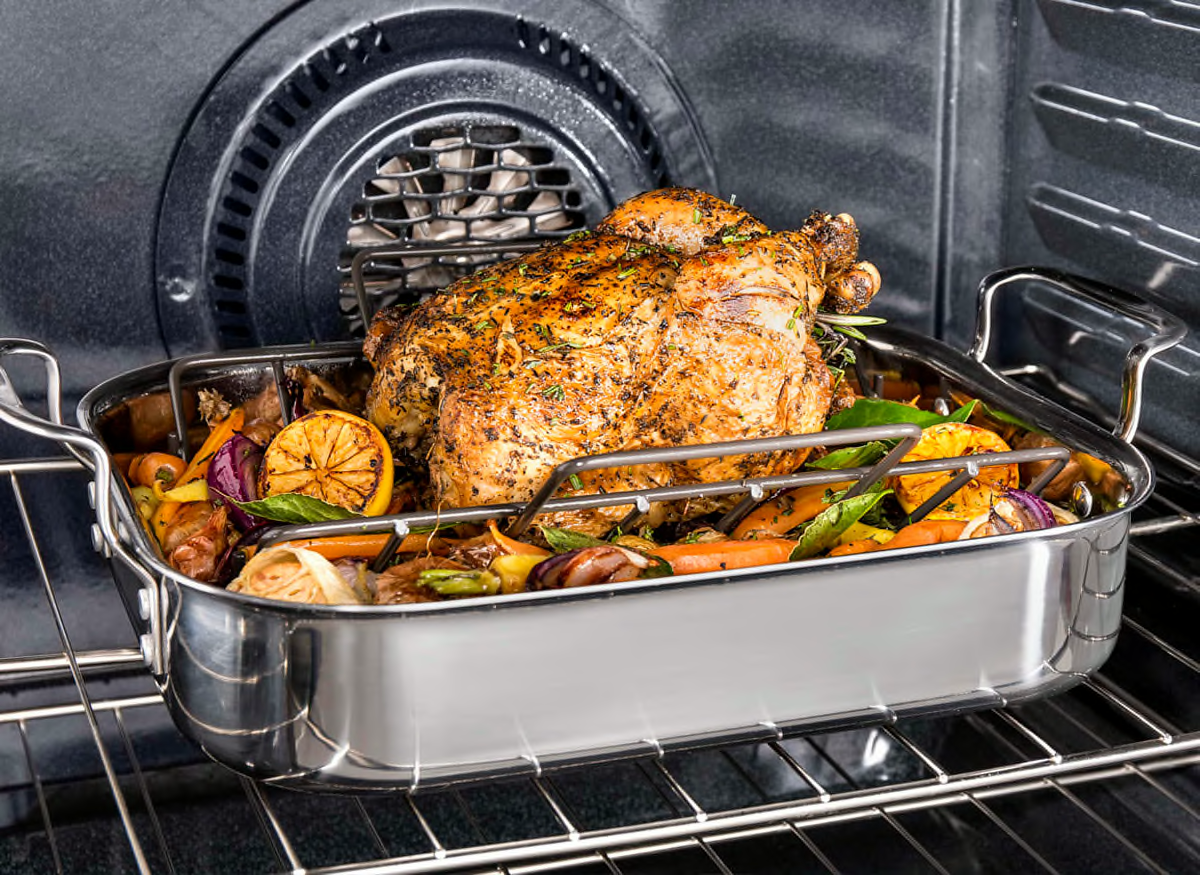
Convection
Many midpriced and higher-priced wall ovens have one or more convection fans that circulate hot air, which can reduce cooking time for some foods.
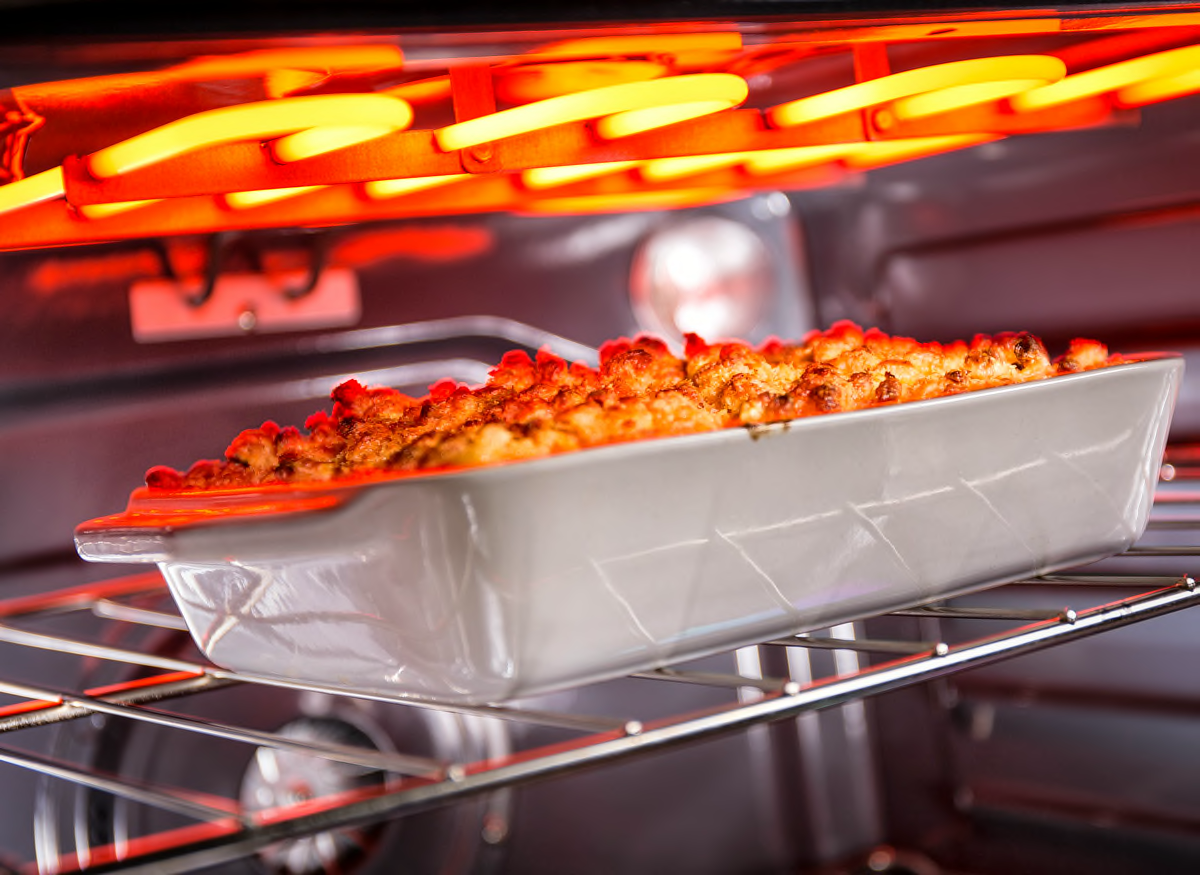
Variable Broil Settings
Most electric and some gas ovens have this feature. It offers adjustable settings for broiled foods that need slower or faster cooking, instead of only “on” (typically 500° F) and “off.”
PHOTO: KENMORE
Air-Frying Capability
This oven function lets you cook crispy foods like french fries without buying a countertop air fryer. Some ovens include a perforated tray for air-frying, which allows hot air to circulate while you cook. Some manufacturers sell this tray separately.
PHOTO: GE
Control Lockout
This lets you disable the oven controls and is recommended for households with children.
PHOTO: KITCHENAID
WiFi Connectivity
Most WiFi-connected ovens work with a smartphone app, which lets you check the oven temperature, set a timer, or—if your oven comes with a temperature probe—check the internal temperature of whatever you’re cooking. You can also use the app to make sure your oven is turned off after you’ve left the house.
PHOTO: WHIRLPOOL
Side-Swing and French Doors
Some ovens have a single door with hinges on one side. French-door models (shown) have two doors that separate in the middle and open outward. Both types prevent you from having to reach over an open door to retrieve that 30-pound turkey.
PHOTO: GE
Convection
Many midpriced and higher-priced wall ovens have one or more convection fans that circulate hot air, which can reduce cooking time for some foods.
Variable Broil Settings
Most electric and some gas ovens have this feature. It offers adjustable settings for broiled foods that need slower or faster cooking, instead of only “on” (typically 500° F) and “off.”
PHOTO: KENMORE
Wall Oven Brands
Here are some of the most prominent brands that manufacture wall ovens. Other brands to consider include Café, Dacor, Electrolux, Frigidaire, JennAir, Maytag, Monogram, and Sharp.
This high-end brand offers a full selection of German-engineered kitchen appliances, including single- and double-oven wall ovens starting around $2,100. Bosch wall ovens are sold at Best Buy, Home Depot, Lowe’s, Walmart, and independent retailers.
This mass-market brand manufactures various appliances, with wall ovens starting at $1,000. GE wall ovens are sold at major retailers, such as Best Buy, Home Depot, and Sears, and independent appliance retailers.
This high-end brand sells electric wall ovens priced from around $2,000. KitchenAid wall ovens are sold at Best Buy, Home Depot, Lowe’s, Sears, and independent appliance retailers.
LG makes single- and double-oven wall ovens starting at around $1,300. Its wall ovens are sold at Best Buy, Home Depot, Lowe’s, Walmart, and independent retailers.
This luxury appliance maker sells electric wall ovens priced from $3,000. The appliances are sold mainly through independent appliance retailers.
One of the larger manufacturers of wall ovens, Samsung makes single- and double-oven models that are sold at many major retailers, including Best Buy, Home Depot, and Lowe’s, with single-oven prices starting at $1,300.
This luxury brand sells electric wall ovens priced from $2,900. Thermador wall ovens are sold at Best Buy and independent appliance retailers.
This midlevel mass-market brand sells wall ovens that start at $1,600. The appliances are sold through Best Buy, Home Depot, Lowe’s, Walmart, and independent appliance retailers.
The electric wall ovens we rate from this luxury brand start at $5,300. Wolf targets consumers who want a pro look and high performance. These appliances are sold at independent appliance retailers.
















